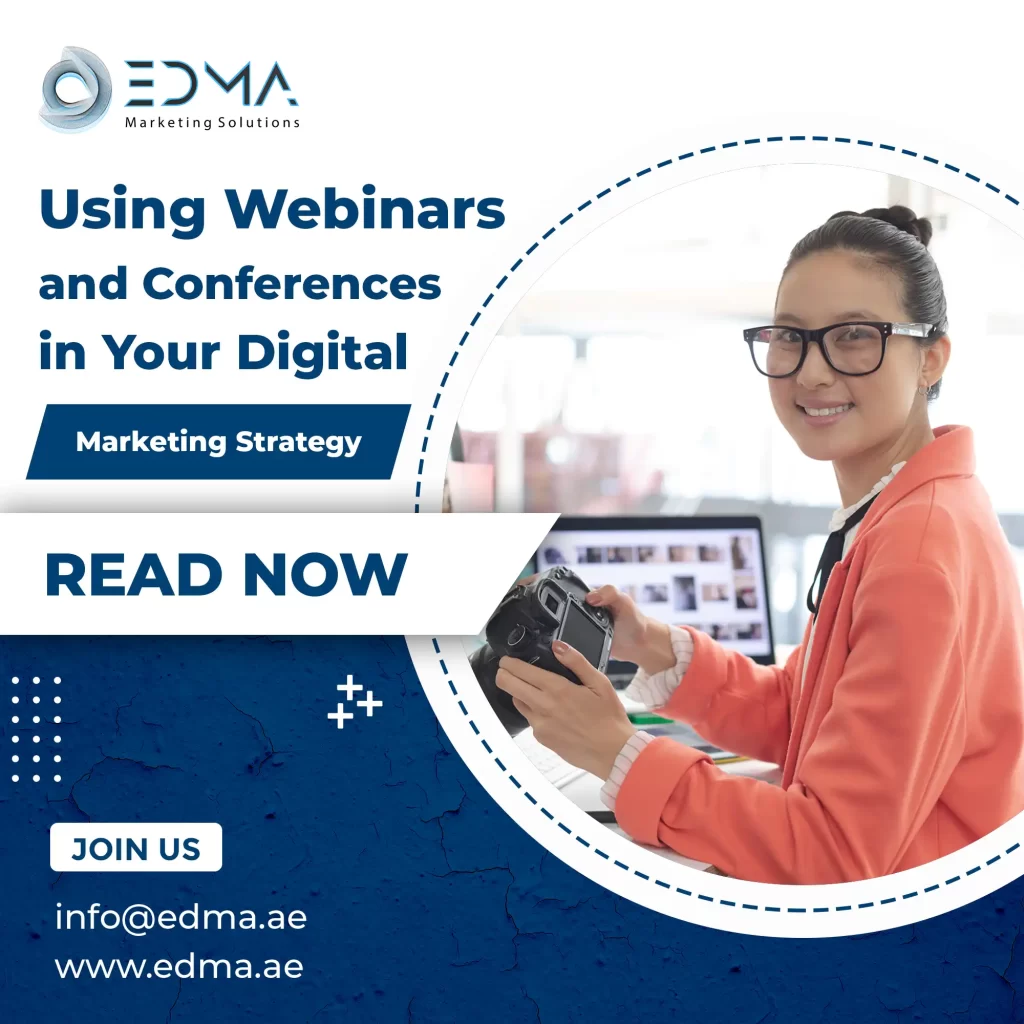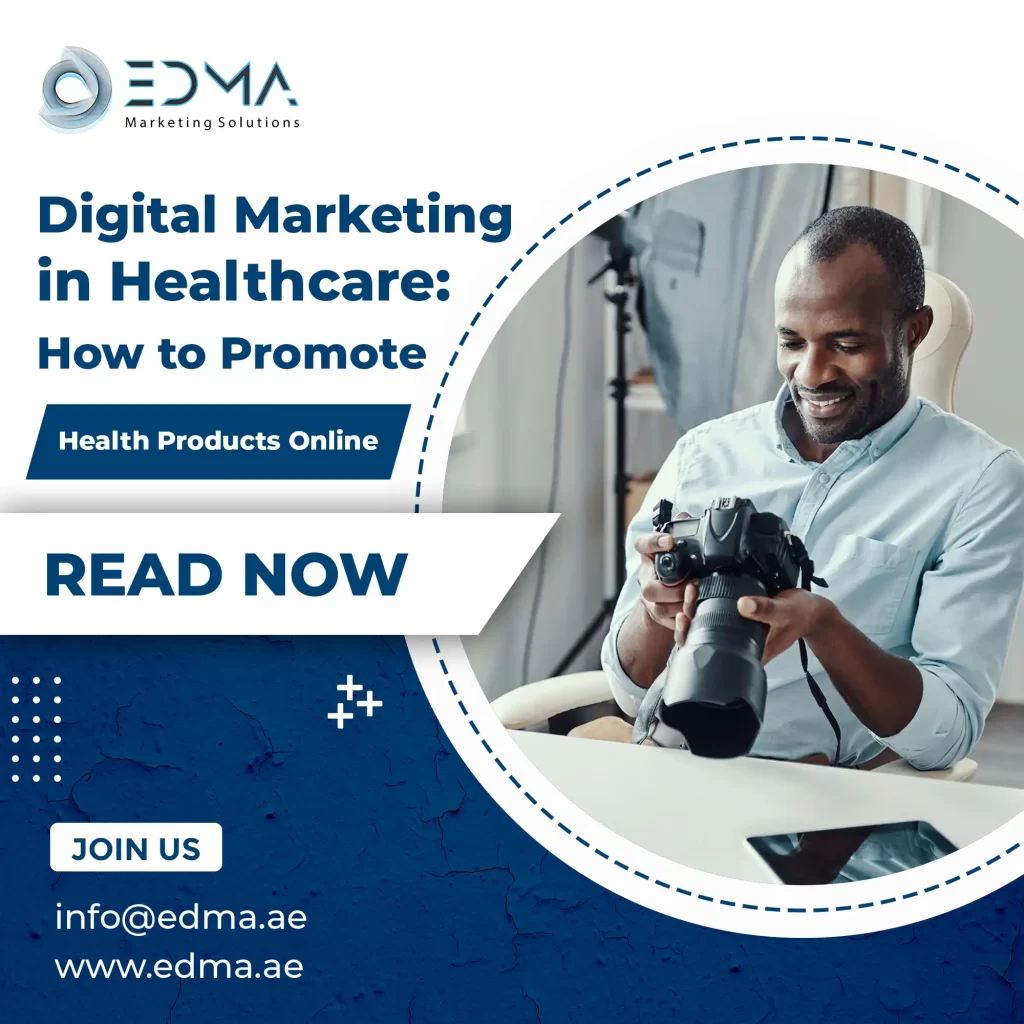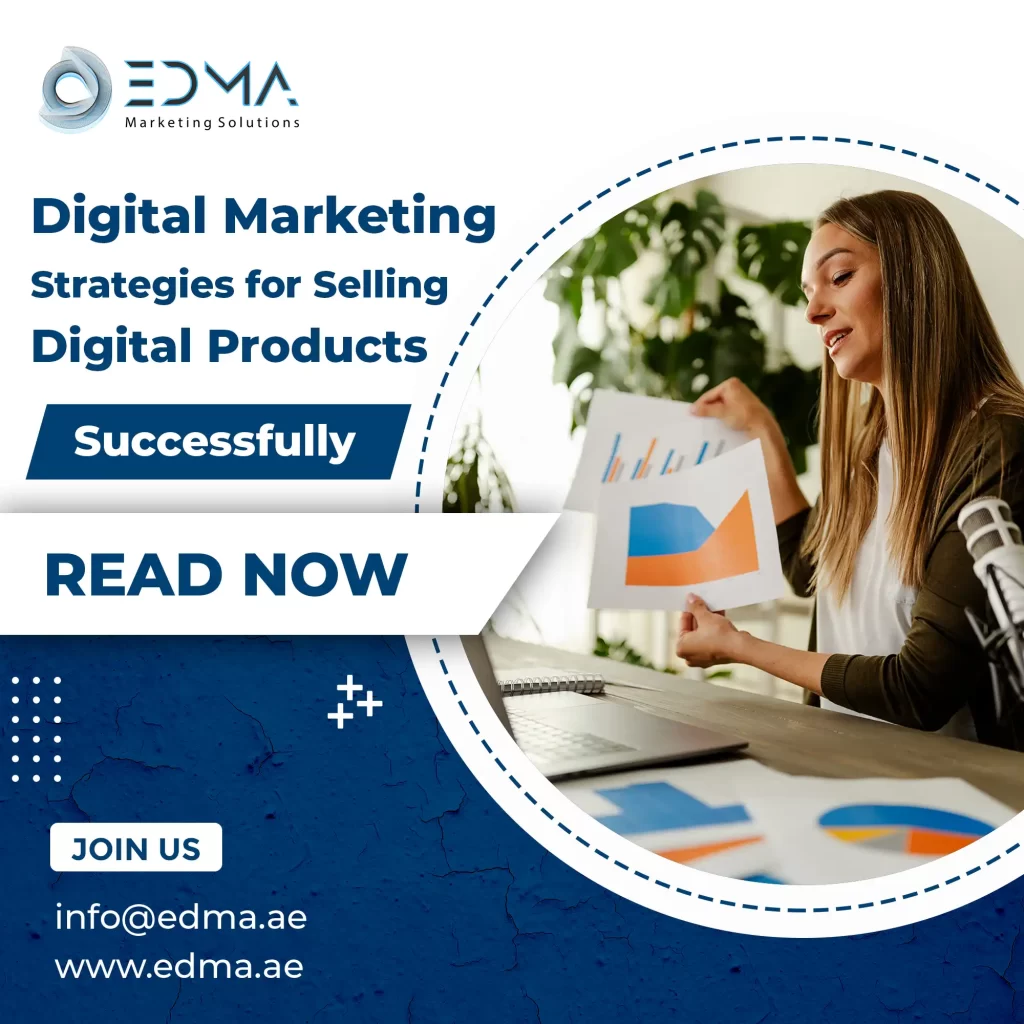The Future of Virtual Production

The Future of Virtual Production: How Technology is Transforming Media Creation Furthermore Virtual production is revolutionizing the way media is created, offering groundbreaking opportunities for filmmakers, game developers, and marketers alike. As technology advances, traditional Moreover production methods are being replaced or enhanced by virtual environments and digital tools that enable a new era of creativity. In this article, we explore how virtual production In addition landscape of media creation and what the future holds for this innovative approach. What is Virtual Production? The Future of Virtual Production is an advanced filmmaking technique that combines physical and digital environments using cutting-edge technology. The Future of Virtual Production utilizes technologies such as: LED Walls and Screens:Furthermore Massive, high-quality LED screens are used to create realistic virtual environments in real-time. Motion Capture: Motion capture technology tracks the movement of actors. Game Engines (e.g., Unreal Engine): Game engines render virtual environments in real-time, enabling live interaction between physical and digital elements. Key Technologies Driving Virtual Production Real-Time Rendering: Technologies like Unreal Engine allow filmmakers to render CGI environments on-the-fly . LED Stage and Volume: The “volume” is a massive, immersive LED stage that can display interactive backgrounds. This allows actors to perform in realistic settings without the need for green screens or on-location shoots. Motion Tracking and Augmented Reality: Motion tracking technology, combined with augmented reality (AR), allows for the seamless integration of physical and virtual worlds. Virtual Cameras: Virtual cameras simulate the real-world camera movement within a digital environment Benefits of Virtual Production Also The Future of Virtual Production offers several significant advantages over traditional filmmaking and media creation methods: Cost Efficiency: Also Virtual production reduces the need for costly physical sets, location shoots, and travel expenses. Filmmakers can create intricate environments without leaving the studio. Faster Turnaround: Because of this Real-time rendering and virtual environments reduce the time required for post-production, allowing for quicker delivery of finished content. Creative Flexibility: Virtual production allows creators to experiment with different settings, camera angles, and lighting in real-time. This flexibility fosters creativity and provides more control over the final product. Safe Filming Environment:In the same way Especially in light of the COVID-19 pandemic, virtual production provides a safe way to shoot scenes without risking exposure to the virus. The Future of Virtual Production Virtual Production Also As technology continues to evolve, virtual production will become more accessible, advanced, and integrated into mainstream media creation. Interactive Experiences: Virtual production technology will be used to create immersive Greater Accessibility: As hardware becomes more affordable and software becomes easier to use, virtual production will open up new opportunities for independent creators, small studios, and content creators to produce high-quality media at lower costs. Conclusion: Embracing the Future of Virtual Production In conclusion Virtual production is not just a trend; it’s the future of media creation. Finally Embracing virtual production now is key to staying ahead of the curve and preparing for the future of media creation. Feel Free Contact us today to learn more and elevate your digital marketing efforts!
How to Create High-Quality Video Content on a Budget

How to Create High-Quality Video Content on a Budget: Tips for Small Creators Furthermore Video content is one of the most powerful tools in digital marketing and media creation. It can capture your audience’s attention, convey your message effectively, and help build brand awareness. However, for small creators or businesses with limited budgets, producing high-quality video content can seem like a daunting task. Fortunately, there are several ways to create professional-looking videos without Moreover breaking the bank. In this article, we’ll explore tips and strategies to help you produce high-quality video content on a budget. Plan Your Content Thoroughly However Before jumping into video production, proper planning is key to keeping costs low while ensuring that your video delivers value. Here’s how to get started: For example Identify Your Objective: What do you want your video to achieve? Whether it’s increasing brand awareness, educating your audience, or driving conversions, having a clear goal will help you plan your video more efficiently. Create a Script or Outline: Writing a script ensures that you stay on track during filming In addition helps avoid unnecessary retakes. For simpler videos, an outline with key points will suffice. Keep It Simple: You don’t need fancy effects or elaborate settings. Focus on the essentials: good messaging, clear visuals, and a well-paced story. Use Affordable Equipment and Tools While professional cameras and equipment can be expensive, there are several budget-friendly tools that can still help you produce high-quality videos. For example Smartphone Cameras: Today’s smartphones can shoot high-definition video that rivals professional cameras. Many creators use their smartphones with minimal additional equipment to produce amazing content. Affordable Lighting Kits: Lighting is crucial for good video quality. A simple ring light or LED panel can improve your video’s look without costing a fortune. DIY Backdrops and Sets: Instead of spending on professional sets, create your own background using inexpensive materials. Consider using a clean wall, fabric, or even cardboard for a minimalistic backdrop. Focus on Audio Quality Also Audio quality is just as important as visual quality in video content. Poor audio can make your video feel unprofessional, even if the visuals are top-notch. Here are ways to improve audio on a budget: For example External Microphone: Instead of relying on your camera or phone’s built-in microphone, invest in an affordable external mic. Lavalier mics, USB mics, or shotgun mics can provide clearer, crisper sound. Soundproof Your Space: Minimize background noise by filming in a quiet room. You can use pillows, blankets, or foam padding to absorb sound and reduce echo. Use Free or Low-Cost Editing Software Nonetheless Editing is where you can really polish your video and make it stand out. You don’t need to invest in expensive software to create great-looking videos. There are plenty of free or low-cost video editing tools available. For example DaVinci Resolve: A professional-grade video editing software that’s available for free. It offers advanced features like color grading and editing for users who want to take their videos to the next level. iMovie or Windows Movie Maker: If you’re looking for basic editing tools, iMovie (for Mac users) or Windows Movie Maker (for PC users) are free and easy to use. Online Editors: Tools like Canva and InShot offer simple video editing features like trimming, adding text, and applying transitions. Maximize Your Resources: Reuse and Repurpose Content A great way to stretch your video production budget is to reuse and repurpose content. If you’ve already created one video, there’s no need to reinvent the wheel for every new piece of content. For example Cut Long Videos into Short Clips: Take snippets from your full-length videos and repurpose them for social media or ads. Repurpose Existing Content: If you have blog posts, infographics, or podcasts, turn them into video content. This allows you to make use of existing resources while providing value to your audience in a new format. Collaborate with Other Creators Collaborations are a great way to create high-quality content without incurring additional costs. You can work with other small creators or influencers in your niche to cross-promote each other’s content. For example Guest Appearances: Invite guests to be part of your video content, whether through interviews or joint discussions. This can help increase your video’s reach and add fresh perspectives without extra production costs. Content Sharing: Share your video content on each other’s channels to expose your videos to a wider audience, increasing views and engagement. Conclusion: High-Quality Video on a Budget Is Possible With the right planning, tools, and strategies, producing high-quality video content on a budget is entirely possible. Focus on simplicity, leverage affordable equipment On the other hand use free or low-cost editing software to create professional-looking videos that captivate your audience. As a small creator or business, the key to success is being resourceful and strategic—making the most of what you have while delivering value to your viewers. How to Create High-Quality Video Content on a Budget: Tips for Small Creators How to Create High-Quality Video Content on a Budget: Tips for Small Creators Video content is one of the most powerful tools in digital marketing and media creation. It can capture your audience’s attention, convey your message effectively, and help build brand awareness. However, for Conversely small creators or businesses with limited budgets, producing high-quality video content can seem like a daunting task. Fortunately, there are several ways to create professional-looking videos without breaking the bank. In this article, we’ll explore tips and strategies to help you produce high-quality video content on a budget. 1. Plan Your Content Thoroughly Before jumping into video production, proper planning is key to keeping costs low while ensuring that your video delivers value. Here’s how to get started: Identify Your Objective: What do you want your video to achieve? Whether it’s increasing brand awareness, educating your audience, or driving conversions, having a clear goal will help you plan your video more efficiently. Create a Script or Outline: Writing a script ensures that you stay on track
Using Webinars and Conferences in Your Digital Marketing Strategy

Using Webinars and Conferences in Your Digital Marketing Strategy Furthermore In the digital era, webinars and online conferences have become highly effective tools for marketing strategies, allowing businesses to engage directly with their target audience, showcase expertise, Moreover drive leads. These events offer an interactive platform for sharing valuable information, addressing customer concerns, Plus positioning your brand as a thought leader in your industry. In this article, In addition we’ll explore how to incorporate webinars and conferences into your digital marketing strategy to enhance customer engagement, build relationships, and generate sales. Why Webinars and Conferences Are Essential for Digital Marketing Also Webinars and online conferences are interactive, engaging formats that provide immense value for both businesses and customers. As well as Here’s why they are essential components of a successful digital Conversely marketing strategy: For example Lead Generation: Webinars allow you to gather information about potential customers. On the other hand By requiring participants to register, you can capture their details and nurture them through your sales funnel. Establish Authority: Hosting webinars on relevant topics positions your brand as an authority in your field. This can help build trust with your audience, making them more likely to consider your Whereas products or services. Direct Engagement: Webinars offer real-time interaction with your audience, allowing you to answer questions, address concerns, and provide valuable insights. Content Repurposing: After the event, you can repurpose webinar recordings into blogs, social media posts, or email content, allowing you to maximize the value of the event. How to Use Webinars and Conferences for Lead Generation In other words One of the most significant benefits of webinars and online conferences is their ability to generate qualified leads.Plus Here’s how to use these events to capture leads and move them further down the sales funnel: For example Targeted Topics: Choose topics that address the pain points and interests of your target audience. The more specific and relevant the topic, the more likely you are to attract a highly engaged audience. Registration Forms: Use registration forms to gather contact information from attendees. This gives you access to potential leads and allows you to send follow-up content or offers. Exclusive Offers: Provide exclusive offers, discounts, or free resources to attendees to incentivize them to take action after the event. Best Practices for Hosting Successful Webinars and Conferences To ensure your webinars and online conferences are effective in your digital marketing strategy, follow these best practices: For example Promote in Advance: Start promoting your webinar or conference at least two weeks ahead of time. Use email campaigns, social media, and paid ads to reach your audience. Engaging Content: Provide valuable and actionable content that resonates with your target audience. Avoid hard-selling during the webinar and focus on educating and solving problems. Interactive Elements: Incorporate polls, Q&A sessions, and chat features to keep the audience engaged and foster interaction. High-Quality Production: Ensure good video and audio quality. Test your equipment beforehand to avoid technical issues. Clear CTAs: End your webinar with a clear call-to-action (CTA), guiding attendees to the next step, whether it’s scheduling a demo, signing up for a free trial, or downloading a resource. Leveraging Social Media for Webinar Promotion That is to say Social media platforms are powerful tools for promoting your webinars and online conferences. Here’s how to leverage social media for increased visibility and engagement: For example Teaser Content: Create teaser videos, countdowns, and posts leading up to the event. Share behind-the-scenes content to build excitement. Hashtags: Use relevant hashtags to increase the reach of your posts and allow users to find your content. Live Streaming: If applicable, use live streaming to give a sneak peek of the event or to host smaller, informal sessions leading up to the main event. Conclusion: Incorporating Webinars and Conferences into Your Marketing Strategy In conclusion Webinars and online conferences provide a unique opportunity to engage with your audience in real-time, establish your authority, and drive conversions. By creating targeted content, leveraging To sum up social media promotion, and ensuring seamless execution, you can maximize the impact of these events on your digital marketing also Use webinars and conferences to build meaningful relationships In summary with potential customers, generate qualified leads plus showcase your brand’s expertise in a dynamic and engaging way. Feel Free Contact us today to learn more and elevate your digital marketing efforts!
User Experience (UX) on Your Website

How to Optimize User Experience (UX) on Your Website for Digital Marketing Campaigns Furthermore User Experience (UX) plays a pivotal role in the success of any digital marketing campaign. A seamless and engaging UX ensures that visitors stay longer on your website, interact with your content, In addition take the desired actions—whether that’s signing up for a newsletter, purchasing a product, or engaging with your services. Optimizing UX can increase conversion rates, improve SEO rankings, and enhance customer satisfaction. In this article, we’ll explore practical strategies to optimize the UX on your website to support and amplify your digital marketing campaigns. Why UX Matters in Digital Marketing Good UX is critical for the success of any digital marketing strategy. A website that provides an intuitive, fast, and enjoyable experience not only helps attract visitors but also increases the likelihood of those visitors becoming leads or customers. Here’s why UX matters: For example Higher Conversion Rates: Websites with excellent UX keep users engaged, encouraging them to complete desired actions such as filling out a form, making a purchase, or signing up for a service. Improved SEO: Search engines like Google consider user experience factors, such as page load times and mobile-friendliness, when ranking websites. A website with poor UX can hurt your SEO efforts. Customer Satisfaction: A positive experience on your website builds trust and fosters long-term relationships with customers. If users find what they’re looking for quickly and easily, they are more likely to return. Strategies for Optimizing UX for Digital Marketing Campaigns Here are actionable strategies to improve UX on your website, making it an effective platform for your digital marketing campaigns: Simplify Website Navigation Clear and intuitive navigation is essential for creating a positive user experience. If visitors can’t easily find what they’re looking for, they will quickly leave your website. To optimize navigation: For example Limit Menu Options: Avoid cluttering your navigation bar with too many options. Focus on the most important sections (e.g., products, services, about, contact). Use Clear Labels: Make sure each menu item is clearly labeled and self-explanatory. Avoid jargon or unclear terms. Breadcrumbs: Implement breadcrumb navigation to allow users to trace their steps and easily go back to previous pages. Enhance Mobile Responsiveness In today’s mobile-first world, optimizing your website for mobile devices is no longer optional—it’s essential. Google’s mobile-first indexing prioritizes websites that offer a seamless experience across all devices. Here’s how to optimize for mobile: For example Responsive Design: Ensure your website automatically adjusts to different screen sizes and devices. Mobile-Friendly Buttons: Make buttons and links large enough to be easily tapped on mobile devices. Avoid placing clickable elements too close together. Fast Load Times: Mobile users tend to have less patience than desktop users, so your site must load quickly on all devices. Optimize Site Speed Website speed is a critical factor for both UX and SEO. Slow loading times lead to high bounce rates, and Google’s algorithms take page speed into account when ranking sites. To speed up your website: For example Compress Images: Large images can significantly slow down page load times. Use image optimization tools to reduce file sizes without sacrificing quality. Use Caching: Caching allows frequently accessed data to be stored on users’ devices, reducing load times for returning visitors. Minimize HTTP Requests: Reduce the number of elements on your page (such as scripts, images, and CSS files) to limit the number of HTTP requests needed to load a page. Improve Content Readability Content is king in digital marketing, but its effectiveness depends on how easily users can read and digest it. To improve readability: For example Use Clear Typography: Choose legible fonts, with appropriate sizes and line spacing. Avoid too many different fonts, which can overwhelm readers. Break Up Text: Use headers, subheaders, bullet points, and short paragraphs to make your content easier to scan. Contrast: Ensure high contrast between text and background colors for readability. Avoid using low-contrast color combinations like light gray text on a white background. Add Clear Calls-to-Action (CTAs) Your website’s calls-to-action (CTAs) guide users toward taking the next step in their journey with your brand, whether that’s purchasing a product, subscribing to a newsletterز In the same way downloading a whitepaper. Effective CTAs can boost conversions significantly: For example Visibility: Make sure your CTAs stand out on the page by using contrasting colors, bold text, and strategic placement (e.g., near the top of the page, at the end of blog posts, or after key content sections). Clarity: Be clear about what action you want users to take. Instead of generic phrases like “Click Here,” use action-oriented copy like “Get Your Free eBook” or “Start Your Free Trial.” Urgency: Create a sense of urgency by using phrases like “Limited Time Offer” or “Buy Now for 20% Off.” Personalize User Experience Personalization helps users feel more connected to your brand and enhances their overall experience. Personalization can improve engagement, lead generation, and conversion rates. But You can personalize UX by: For example Dynamic Content: Use dynamic content on your website that changes based on user behavior. For instance, display products they’ve previously viewed or offer personalized recommendations. Location-Based Content: Use geolocation data to show localized offers or content based on the user’s location. User-Specific Messaging: Segment your audience based on demographics, preferences, or previous interactions, and show them tailored messages. Test and Iterate UX optimization is an ongoing process. Regularly test your website to ensure it’s meeting user expectations. A/B testing can help you identify what works and what needs improvement: For example A/B Testing: Test different versions of CTAs, landing pages, and website layouts to see which ones perform best. Heatmaps: Use heatmaps to track how users interact with your website, including where they click and how far they scroll. User Feedback: Regularly gather user feedback through surveys or usability testing to identify areas for improvement. Conclusion: Optimizing UX for Successful Digital Marketing Campaigns User experience is a cornerstone of effective digital marketing. By focusing on navigation, mobile responsiveness, website
Digital Marketing in Healthcare: How to Promote that

Digital Marketing in Healthcare: How to Promote Health Products Online Furthermore The healthcare industry is increasingly moving online, as more consumers turn to the internet for information, services, and products related to their health and well-being. Digital marketing offers Moreover healthcare providers and health product companies an effective way to reach potential customers, build trust, and drive sales. In this article, we’ll explore the best digital marketing strategies In addition promoting health products online while ensuring compliance with industry regulations. Understand Healthcare Marketing Regulations As well as digital marketing Before diving into the health products, it’s crucial to understand the regulations that govern the healthcare industry. For example FDA Regulations: In the U.S., the Food and Drug Administration (FDA) regulates health-related claims made in advertising, especially when it comes to pharmaceuticals and medical devices. HIPAA Compliance: The Health Insurance Portability and Accountability Act (HIPAA) ensures that patient privacy is protected, which can impact how health companies collect and use customer data. FTC Guidelines: The Federal Trade Commission (FTC) monitors health-related marketing practices to prevent deceptive or misleading claims. Content Marketing for Health Products As well as digital marketing Content marketing is a powerful strategy for educating potential customers Plus building trust in the healthcare products. Offering valuable, informative content helps position your brand as a credible source of information. For example Blogging: Create blog posts that provide valuable health tips, how-to guides, and product recommendations. healthcare Optimize your blog posts for SEO to ensure they rank well in search engines. Infographics: Health-related information can often be complex. Infographics are a great way to simplify medical content and make it accessible and shareable on social media platforms. Paid Advertising to Target Health-Conscious Consumers Paid advertising is an effective way to promote health products online, but it’s important to be mindful of platform guidelines. Ads for healthcare products are often subject to additional scrutiny on platforms like Google, Facebook, and Instagram. For example Google Ads: Use Google Ads to target keywords related to health and wellness. Create ad campaigns that promote specific products, services, or blog posts. Social Media Advertising: Platforms like Facebook and Instagram allow you to target health-conscious individuals based on their interests and behavior. You can create ads that highlight the benefits of your products and encourage users to click for more information. Social Media Marketing in Healthcare Digital marketing in Social media platforms offer a unique opportunity to engage with health-conscious consumers and promote, In the same way healthcare products directly. However, healthcare marketing on social media requires sensitivity and a thoughtful approach to avoid misleading claims. For example Community Building: Build a community on social media by engaging with your followers, answering questions, and sharing informative content. Influencer Partnerships: Collaborate with health influencers who can authentically promote your health products to their audience. Customer Reviews and Testimonials Encourage satisfied customers to leave reviews on your website or social media channels. For example Trust Signals: Display reviews and testimonials prominently on your product pages. Positive feedback from real customers can help alleviate concerns and drive sales. User-Generated Content: Encourage customers to share their success stories or experiences using your products. Repost their content to showcase the benefits of your health products. Implement these strategies today to boost your health product sales online. Stay compliant, build trust, and connect with your audience like never before Conclusion: Promoting Health Products Online Effectively To sum up Digital marketing plays a crucial role in promoting healthcare products, but it’s important to adhere to industry regulations and maintain transparency. By leveraging content marketing, paid advertising, social media, and customer reviews, you can build trust, As a result increase awareness, and ultimately drive sales for your health products. Specifically By using these strategies and staying informed about legal requirements, healthcare companies can successfully navigate the digital space and reach their target audience. Feel Free Contact us today to learn more and elevate your digital marketing efforts!
Building Long-Term Relationships with Customers

Building Long-Term Relationships with Customers Through Digital Marketing Furthermore In the age of constant online interaction, building long-term relationships with customers has never been more important. Digital marketing plays a vital role in fostering these relationships, enabling Moreover businesses to stay connected with customers, provide value, and drive loyalty. In this article, we’ll explore the strategies that businesses can use to create long-term customer relationships and the role In addition digital marketing plays in facilitating these connections. Why Long-Term Relationships Matter Also Building long-term relationships with customers is essential for the continued success of a business. While acquiring new customers is important, retaining existing customers can be even more valuable. As well as Long-term customers are more likely to make repeat purchases, refer others to your brand, and become advocates for your business. In addition, loyal customers tend to spend more over time, which boosts profitability. For example Customer Lifetime Value (CLV): A long-term relationship increases the customer lifetime value, which is the total revenue a customer will generate over their relationship with your brand. Brand Advocacy: Happy, loyal customers are more likely to recommend your brand to friends and family, serving as organic brand advocates. Personalized Communication Through Email Marketing Plus Email marketing is one of the most powerful tools for nurturing long-term relationships with customers. By delivering personalized, relevant content to customers over time, you can keep them engaged with your brand. For example Segmentation: Segment your email list based on demographics, behavior, or past purchases to send targeted and relevant messages. Automation: Use automated email sequences to send welcome emails, birthday offers, product recommendations, or re-engagement messages to maintain a continuous connection with your customers. Value-Added Content: Send your customers value-added content, such as educational resources, special offers, and product updates, to keep them engaged and invested in your brand. Engaging Content Across Multiple Channels In other words Digital marketing is not limited to email. Social media, content marketing, and paid ads all play a role in building long-term customer relationships. Consistently engaging your audience with That is to say meaningful content will strengthen the relationship over time. For example Social Media Engagement: Regularly interact with customers on platforms like Facebook, Instagram, and Twitter. Respond to comments, answer questions, and participate in conversations to build rapport. Content Marketing: Create content that addresses customer pain points and provides value. Blog posts, videos, podcasts, and how-to guides can educate your customers and foster a deeper connection. Customer Feedback and Surveys: Use surveys and feedback tools to listen to your customers. Show them that you care about their opinions and are committed to improving their experience. Loyalty Programs and Rewards Rewarding customers for their loyalty is a powerful way to build long-term relationships. Implementing a loyalty program can incentivize repeat purchases and encourage customers to continue engaging with your brand. For example First Discounts and Offers: Offer exclusive discounts or early access to new products for loyal customers. Second Points Systems: Implement a points-based system where customers earn rewards for every purchase or interaction with your brand. Third Referral Programs: Encourage your customers to refer friends and family in exchange for rewards or discounts. Provide Exceptional Customer Service Customer service is a key pillar of long-term relationships. Prompt, helpful, and empathetic service can transform a one-time buyer into a loyal customer. For instance Digital marketing strategies such as live chat, chatbots, and support forums allow businesses to address customer inquiries quickly and efficiently. For example Live Chat: Use live chat features on your website or social media to provide real-time support to customers. Chatbots: Implement AI-powered chatbots to handle common customer queries and provide instant responses, improving the overall customer experience. Customer Support on Social Media: Monitor your social media channels for customer inquiries and respond promptly to build trust and loyalty. Conclusion: Build Strong, Lasting Relationships In summary Digital marketing is a powerful tool for fostering long-term relationships with customers. By engaging in personalized communication, creating valuable content, offering loyalty rewards, On the other hand providing excellent customer service, you can turn one-time customers into loyal advocates for your brand. Remember,But a strong relationship with your customers can lead to greater customer retention, increased sales, and long-term business success. Feel Free Contact us today to learn more and elevate your digital marketing efforts!
Importance of Automation in Digital Marketing

The Importance of Automation in Digital Marketing: Saving Time and Effort In today’s fast-paced digital landscape, marketing teams are constantly seeking ways to improve efficiency, reach broader audiences, and maximize ROI. Digital marketing automation has become an essential tool Furthermore for businesses looking to streamline their marketing efforts. Automation helps save time, increase productivity, and create personalized customer experiences without manual intervention. This Moreover article explores the significance of automation in digital marketing and how businesses can leverage it to save time and effort while enhancing overall performance. What is Digital Marketing Automation? In addition Digital marketing automation refers to the use of software platforms and technologies to automate repetitive marketing tasks. These tasks may include email campaigns, social media posting, Also nurturing, and data analysis. Automation allows businesses to focus on strategic activities while the software handles the execution of time-consuming and repetitive processes. For example Email Marketing Automation: Automatically sending emails to customers based on their behavior or predefined triggers, such as an abandoned cart, subscription confirmation, or personalized promotions. Social Media Automation: Scheduling and posting content on social media platforms at optimal times, As well as allowing businesses to maintain a consistent presence without having to manage posts manually. Lead Scoring and Nurturing: Automatically qualifying and nurturing leads through a series of personalized emails, However, content offers, and follow-up reminders. How Automation Saves Time and Effort On the other hand Time is one of the most valuable resources for any marketing team, Because of this Nonetheless and automation provides a significant advantage by reducing the amount of manual work involved in executing digital marketing tasks. Here are a few ways automation saves time and effort: For example Efficiency in Campaign Execution: Marketing automation software can handle a variety of tasks, such as managing email lists, segmenting audiences, and sending messages at the right time. By setting up these systems, businesses can run campaigns 24/7 without manual intervention. Personalization at Scale: Automation allows marketers to create personalized content for each customer segment without having to craft individual messages manually. This personalization enhances the customer experience and drives higher engagement rates. Real-Time Analytics and Reporting: Automation tools track campaign performance in real-time, providing detailed insights into key metrics like open rates, click-through rates (CTR), and conversion rates. Marketers can use this data to optimize future campaigns without having to manually gather and analyze data. Benefits of Marketing Automation The advantages of digital marketing automation are clear. By integrating automated tools into your marketing strategy, you can achieve the following benefits: For example Improved Lead Management: Automation helps identify and engage leads at different stages of the sales funnel, nurturing them until they are ready to make a purchase. This ensures that leads are consistently followed up with relevant content, which boosts the chances of conversion. Increased ROI: By automating tasks, businesses can run more campaigns in less time. This leads to a higher volume of sales and a better return on investment. Key Automation Tools for Digital Marketing There are several marketing automation tools available today, each with its own set of features. As a result are some popular tools businesses can use to automate their digital marketing efforts: For example HubSpot: A comprehensive marketing automation platform that offers email marketing, lead management, social media scheduling, and customer relationship management (CRM) features. Mailchimp: A popular email marketing tool that automates email campaigns, segmenting your audience, and tracking performance. Hootsuite: A social media management tool that automates the scheduling and posting of content across multiple platforms. ActiveCampaign: A tool that focuses on email marketing automation, customer relationship management (CRM), and lead scoring. Conclusion: Embrace Automation for Better Results In summary The importance of automation in digital marketing cannot be overstated. It saves time, increases productivity, and helps marketers deliver personalized and relevant content at scale. By incorporating automation into your marketing strategy, you can improve efficiency, enhance customer experiences, and achieve better results in less time. Embrace the power of automation to streamline your processes, increase engagement, and drive business growth. Feel Free Contact us today to learn more and elevate your digital marketing efforts!
Digital Marketing Strategies for Selling Digital Products

Digital Marketing Strategies for Selling Digital Products Successfully Furthermore Selling digital products presents unique challenges and opportunities in the digital marketing landscape. Whether you’re offering software, eBooks, online courses, or digital artwork, a tailored Moreover marketing strategy is key to standing out in the crowded digital marketplace. In this article, we’ll explore effective digital marketing strategies for selling digital products In addition to how you can apply them to grow your business. Leverage Content Marketing to Educate Your Audience Content marketing is one of the most effective ways to promote digital products. By creating valuable content, you can educate your audience on the benefits of your product Also how it solves their problems. For example Blogging: Create high-quality blog posts that address the pain points of your target audience. Use SEO best practices to optimize your posts for search engines, driving organic traffic to your website. Webinars: Offer free webinars or workshops to showcase your digital product in action. This is especially useful for complex products, such as software or online courses, where customers need a demonstration of its value. Use Email Marketing to Nurture Leads As well as Email marketing is an essential strategy for selling digital products. By nurturing your leads through targeted email campaigns, you can move them through the sales funnel and encourage conversions. For example Lead Magnets: Offer free resources, like eBooks or templates, in exchange for email sign-ups. Once you have their contact information, you can send them targeted emails that highlight the benefits of your digital product. Product Launches: Use email to announce new digital products or updates to existing ones. Create excitement with exclusive offers or discounts for early adopters. Invest in Paid Advertising However Paid advertising is a powerful way to reach a larger audience quickly. For digital products, platforms like Google Ads, Facebook Ads, and YouTube Ads can help you target people who are actively looking for solutions like yours. For example Google Ads: Use Google Ads to target specific keywords related to your digital product. You can create search ads that appear when users search for products in your niche. Facebook and Instagram Ads: These platforms offer highly targeted advertising options, allowing you to promote your digital products to users based on their interests, behavior, and demographics. Offer Free Trials or Demos On the other hand For digital products like software or online tools, offering free trials or demos can be an effective strategy to increase conversions. Free trials allow customers to experience the value of your product firsthand, which can lead to higher conversion rates. For example Limited-Time Trials: Offer a limited-time trial of your product with no obligation to buy. This will encourage users to take action quickly. Freemium Model: If possible, offer a freemium version of your digital product with basic features available for free. This can help you attract more users and upsell them to premium plans. Use Testimonials and Social Proof Nonetheless Social proof is a powerful motivator for purchasing decisions. Showcase customer reviews, testimonials, and success stories to build trust and credibility for your digital product. For example Customer Reviews: Display positive reviews and ratings from happebsite and producy customers on your wt pages. Case Studies: Share detailed case studies that demonstrate how your digital product has helped customers solve specific problems. Conclusion: Selling Digital Products with Effective Marketing Strategies To sum up Selling digital products requires a unique marketing approach, but by leveraging content marketing, email campaigns, paid advertising, free trials, and social proof, you can effectively drive sales. By educating your audience and demonstrating the value of your product, Finally you’ll build trust and increase the likelihood of conversions. Use these strategies consistently, and watch your digital product sales grow. Feel Free Contact us today to learn more and elevate your digital marketing efforts!
the Right Digital Marketing Channels

How to Choose the Right Digital Marketing Channels for Your Product Furthermore Choosing the right digital marketing channels is essential for any business aiming to maximize its online presence. In this article, we’ll walk you through the process of Moreover choosing the right digital marketing channels for your product, ensuring that your marketing efforts deliver the highest return on investment (ROI). Understand Your Target Audience Before selecting a digital marketing channel, it’s important to have a deep understanding of your target audience. Knowing who your customers are, what they like, and how they In addition interact with digital media will help you make informed decisions. Demographics: Consider the age, gender, income, location, and interests of your target audience. For example, younger audiences may engage more with platforms like Instagram or TikTok, while older audiences may prefer Facebook or LinkedIn. Behavior: Understand how your audience consumes content. Do they prefer visual content, blog posts, videos, or podcasts? Do they frequently search for products online or engage with social media influencers? Match Your Product with the Right Channel Also Different digital marketing channels are better suited for different types of products. Here’s a breakdown of how to match your product with the appropriate marketing channel: Social Media: If your product is visually appealing or has a broad appeal, platforms like Instagram, Pinterest. As well as Facebook are great for showcasing products through engaging posts and ads. Google Ads: If your product is search-based (e.g., a service or a product with clear intent behind the search). On the other hand using Google Ads can help capture potential customers when they are actively searching for solutions. Email Marketing: If you have a product that benefits from in-depth content, such as educational products or high-value purchases. On the other hand email marketing is an effective channel to nurture relationships and drive conversions. Evaluate the Effectiveness of Each Channel Not all marketing channels are created equal, and some may work better for your business than others. To evaluate the right channels for your product, consider the following: Cost-Effectiveness: Some channels may require a significant budget to run effective campaigns (e.g., Google Ads, LinkedIn Ads), while others, Content Type: Different platforms prioritize different types of content. Consider Your Marketing Goals Your marketing objectives should play a major role in determining the channels you use. Are you looking to drive brand awareness, generate leads, or increase direct sales? Brand Awareness: Social media platforms like Facebook, Instagram, and Twitter are ideal for generating brand awareness through organic and paid campaigns. Lead Generation: If you’re focused on lead generation, consider using Google Ads, LinkedIn Ads, or content marketing through email to attract and capture potential leads. Sales and Conversions: For direct conversions, use platforms with transactional intent, like Google Shopping or Facebook’s retargeting ads, which are designed to drive purchases directly. Test and Optimize Your Channel Strategy Once you’ve chosen your digital marketing channels, the next step is to test their effectiveness. Use A/B testing to experiment with different ads, content, and targeting on each platform. Track your results using analytics tools to identify which channels are delivering the best ROI. Analytics: Tools like Google Analytics, Facebook Insights, and HubSpot allow you to track the performance of your campaigns. Monitor key metrics such as click-through rate (CTR), conversion rate, and cost per acquisition (CPA). Optimization: Continuously refine your approach based on what’s working. Allocate more resources to the channels that are delivering the highest ROI and adjust your strategy for underperforming channels. H2: Conclusion: Maximize Your ROI with the Right Channels Choosing the right digital marketing channels for your product is essential for driving business growth. By understanding your target audience, matching your product with the best-suited channels, evaluating the effectiveness of each platform, and continually optimizing your strategy Feel Free Contact us today to learn more and elevate your digital marketing efforts!
Storytelling in Marketing: How to Build a Long-Term Relationship

Storytelling in Marketing: How to Build a Long-Term Relationship with Customers Furthermore Storytelling is one of the most powerful tools in marketing today. While traditional marketing often focuses on selling products, storytelling goes deeper, creating emotional connections between the Moreover brand and the audience. Subsequently By weaving compelling stories, businesses can engage customers, build trust, and foster long-term relationships. In this article, we’ll explore how storytelling in marketing can In addition to help build lasting relationships with customers, making them more loyal and likely to advocate for your brand. Why Storytelling is Crucial in Modern Marketing Also Storytelling resonates with customers on an emotional level, making them feel more connected to a brand. Instead of just showcasing a product or service, storytelling conveys the brand’s values, mission, and As well as purpose. Meanwhile People connect with stories—they help to humanize a brand, and this emotional connection fosters trust and loyalty. first Emotional Engagement: Stories can trigger emotions such as happiness, empathy, or inspiration. When customers connect emotionally, they are more likely to engage with your brand and remember it over time. second Memorability: People remember stories far longer than they remember facts or statistics. A well-told story can stick with customers and make your brand memorable. Crafting Your Brand Story Plus To successfully use storytelling in your marketing efforts, you must first create a compelling brand story. A great brand story should be authentic, relatable, and aligned with your audience’s values. Here’s how However to craft your brand’s narrative: Define Your Brand’s Purpose: Why does your brand exist? What problem does it solve, On the other hand how does it make the world a better place? Customers are more likely to connect with brands that stand for something meaningful. Introduce Relatable Characters: Introduce characters that your audience can relate to—whether they are real-life customers, employees, or even fictional characters who embody your brand values. Highlight Challenges and Solutions: Every good story involves overcoming obstacles. In summary Show how your brand has solved a problem or helped customers overcome challenges. To sum up This will help your audience Nonetheless see your product or service as a solution to their own problems. Showcase Real Impact: Share real stories of how your product or service has made a difference in customers’ lives. Testimonials, case studies, and success stories can strengthen your brand’s narrative. Using Storytelling Across Digital Marketing Channels Effective storytelling should be consistent across all of your marketing channels, whether you’re using social media, your website, email newsletters, or video content. Here’s how to use storytelling in each of these areas: For example Website: Use your website to tell the story of your brand. Include an “About Us” page that outlines your company’s history, mission, and values. Tell stories of customer success on your product or service pages. Social Media: Social media is an excellent platform for sharing stories through posts, videos, and live interactions. Use Instagram and Facebook Stories to engage with your audience in real-time. In the same way Share behind-the-scenes content, customer stories, and content that aligns with your brand’s mission. Email Campaigns: Use email newsletters to share long-form stories that connect with your customers on a deeper level. Just as Segment your audience and send personalized stories that align with their interests. Video Marketing: Video is one of the most effective formats for storytelling. Furthermore Create videos that showcase real customer experiences, behind-the-scenes content, or explain the mission of your brand in a compelling way. Building Trust and Loyalty Through Consistent Storytelling Consistency is key in building long-term relationships with customers. Customers who resonate with your story will come back for more, and they are more likely to become loyal advocates for your brand. For example Authenticity: Your story must be authentic and true to your brand’s values. In the digital age, customers can easily spot inauthenticity. Be transparent about your journey, challenges, and successes. Engagement: Encourage customers to share their own stories and experiences with your brand. User-generated content (UGC) is a powerful way to engage customers and let them become part of your brand’s story. Emotional Connection: Keep your storytelling focused on the emotions that your customers experience. Whether you’re celebrating their successes or highlighting how your brand has made an impact, maintaining an emotional connection is crucial. Measuring the Impact of Storytelling Just like any other marketing tactic, it’s essential to measure the effectiveness of your storytelling efforts. Here are a few metrics to track: For example Customer Engagement: Monitor how your audience interacts with your stories on social media, through comments, shares, and likes. Brand Awareness: Track increases in brand recognition, website visits, and social media mentions following the release of a compelling story. Customer Retention: Look at repeat purchase rates, subscription renewals, and the number of customers who refer others to gauge the long-term relationship-building impact of storytelling. Conclusion: Build Long-Term Relationships with Storytelling Storytelling is more than just a marketing tool—it’s a way to build lasting, emotional connections with customers. By crafting an authentic and relatable brand story, sharing it across multiple digital channels, and staying consistent, you can foster trust, loyalty, and long-term customer relationships. Eventually Storytelling creates a memorable experience for customers, turning them from one-time buyers into lifelong brand advocates. Feel Free Contact us today to learn more and elevate your digital marketing efforts!
